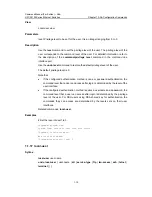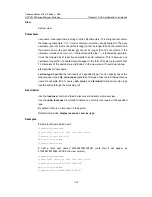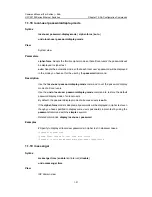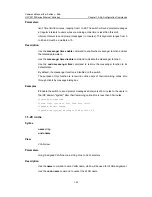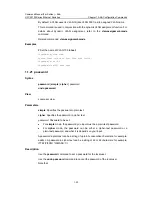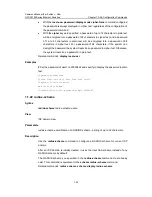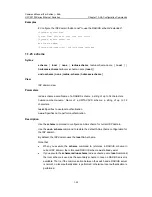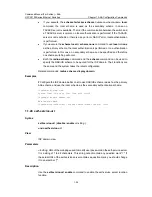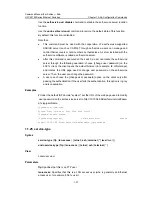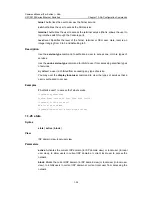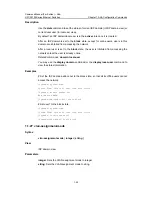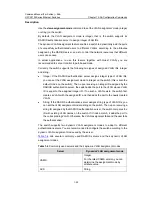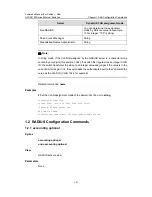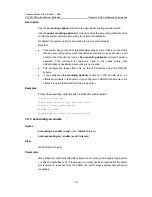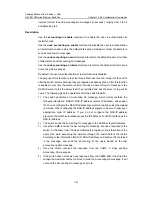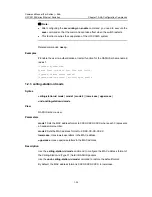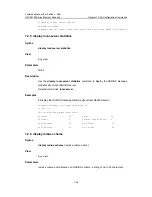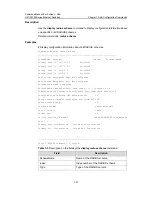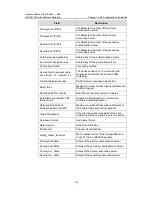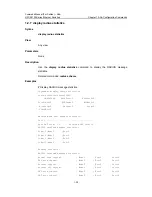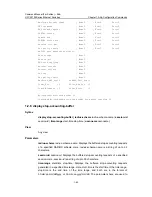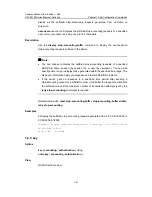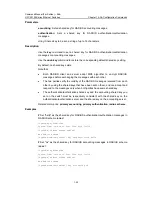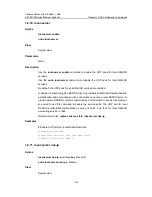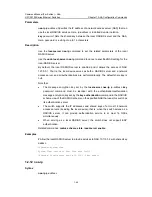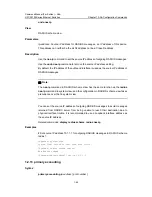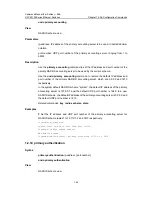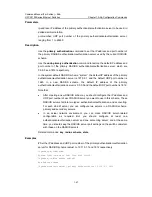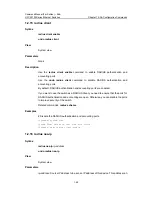
Command Manual (For Soliton) – AAA
H3C S3100 Series Ethernet Switches
Chapter 1 AAA Configuration Commands
1-33
interval
: Interval to send Accounting-On messages (in seconds), ranging from 1 to 30
and defaulting to 3.
Description
Use the
accounting-on enable
command to enable the user re-authentication at
restart function.
Use the
undo accounting-on enable
command to disable the user re-authentication
at restart function and restore the default interval and maximum number of attempts to
send Accounting-On messages.
Use the
undo accounting-on send
command to restore the default maximum number
of attempts to send Accounting-On messages.
Use the
undo accounting-on interval
command to restore the default interval to send
Accounting-On messages.
By default, the user re-authentication at restart function is disabled.
The purpose of this function is to solve this problem: users cannot re-log into the switch
after the switch restarts because they are regarded as already online. After this function
is enabled, every time the switch restarts, it sends an Accounting-On message to the
RADIUS server to tell the server that it has restarted and ask the server to log out its
users. The following gives the operations after the switch restarts:
1) The switch generates an Accounting-On message, which mainly contains the
following information: NAS-ID, NAS-IP-address (source IP address), and session
ID. You can configure the NAS-IP-address argument manually by using the
nas-ip
command. When configuring the NAS-IP-address argument, be sure to specify an
appropriate valid IP address. If you do not configure the NAS-IP-address
argument, the switch automatically uses the IP address of a VLAN interface as the
NAS-IP-address.
2) The switch sends the Accounting-On message to the CAMS at regular intervals.
3) Once the CAMS receives the Accounting-On message, it sends a response to the
switch. At the same time it finds and deletes the original online information of the
users who were accessing the network through the switch before the restart
according to the information (NAS-ID, NAS-IP-address and session ID) contained
in the message, and ends the accounting of the users based on the last
accounting update message.
4) Once the switch receives the response from the CAMS, it stops sending
Accounting-On messages.
5) If the switch does not receive any response from the CAMS after it has tried the
configured maximum number of times to send the Accounting-On message, it will
not send the Accounting-On message any more.

